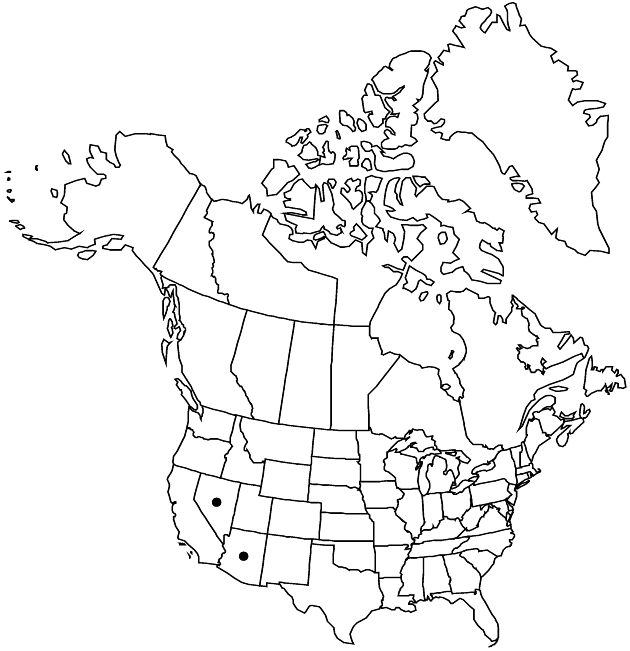Perityle gracilis
in N. L. Britton et al., N. Amer. Fl. 34: 19. 1914.
Perennials or subshrubs, 10–20(–25) cm (stems erect, spreading, or pendent); glabrate or densely puberulent. Leaves: petioles 2–5(–10) mm; blades palmately 3-lobed, or ± cruciform, sometimes entire, or with 1–3 lobes or teeth per side, 3–10(–15) × 2–15 mm, ultimate margins sometimes irregularly lobed or toothed. Heads borne singly or (2–6+) in corymbiform arrays, 5–7 × 4–5.5 mm. Peduncles 5–15 mm. Involucres campanulate. Phyllaries (8–)12–17, linear-lanceolate to lanceolate, 3.5–5.5 × 0.7–1.2 mm. Ray florets 0. Disc florets 30–42; corollas yellow, tubes 0.8–1.1 mm, throats ± tubular, (1.3–)1.6–2 mm, lobes 0.4–0.6 mm. Cypselae oblong-elliptic, 1.8–2.5(–2.8) mm, margins thin-calloused, short-hairy; pappi 0 or of 1(–3) stout bristles to 2 mm, usually plus callous crowns or vestigial, hyaline scales. 2n = 68.
Phenology: Flowering spring–fall.
Habitat: Crevices of limestone rock faces
Elevation: 1200–2200 m
Discussion
Of conservation concern.
Perityle gracilis is known from southeastern Nevada in Meadow Valley Wash and in the Sheep Range. The only Arizona collection is the type (M. E. Jones in 1894, Kaibab Plateau). The 3-fid leaves with cuneate bases set P. gracilis apart from the similar P. congesta and P. tenella.
Selected References
None.
